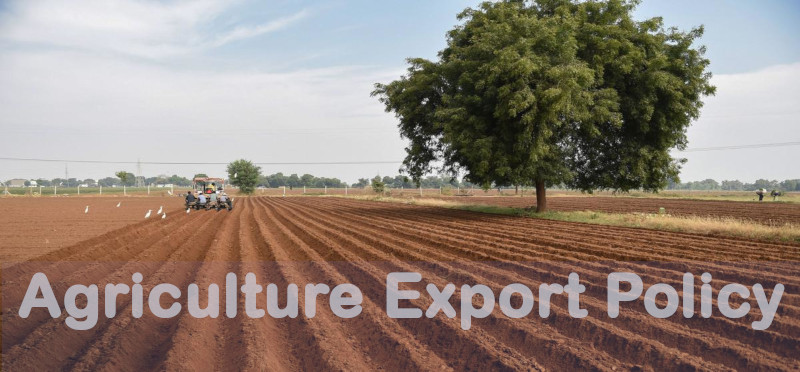
What Is It?
The Union Cabinet had approved the Agriculture Export Policy in December 2018. The policy is to increase Agri Exports from the Country and play an important role in doubling farmers’ income by 2022.
How is This Achieved?
The policy has the following as its objectives:
- To double the current level of Agri exports by 2022. Currently, Indian agri-exports are worth $30 billion and must reach $60billion by 2022. Further, the policy aims to reach $100 billion after 2022.
- Diversification of our exports, expanding our export destinations, boosting value-added and high-value agricultural exports including perishables.
- To promote Agri products that are organic, ethnic, novel, traditional and non-traditional etc.
- Issues like providing market access, reducing barriers, sanitary and phyto-sanitary issues will be dealt.
- To double India’s share in world Agri exports and integrating the country with global Agri chain
- To provide the farmers with the benefit of trade in global markets.
Elements of the Policy
The policy recommendations are divided into two sections:
1. Strategic. This involves
i) Policy measures
ii) Infra and logistics support
iii) Holistic approach to boost exports
iv) Involvement of states in agri exports
2. Operational. This involves
i) focus on agri-clusters
ii) Promoting valu-added exports
iii) Brand India – Marketing and promotion
iv) Attracting private investment in production and processing
v) Establishing strong quality
vi) R & D
What is Hampering Indian Agri Exports?
- For the past few years, the global economic headwinds led to the fall of Indian agri-exports. From $36 billion in FY13, it had dropped to $31 billion in FY17.
- India generally deals with raw, low-processed or semi-processed agriculture produce for exports. These are marketed in bulk. The value of such products is less compared to processed high-value items.
- While rice, marine products, and meat dominate agri-exports, horticulture has a small share.
- Lack of proper standardization, uniformity in quality and the country’s inability to curtail value chain losses are hampering the export growth.
- Also, the varied domestic policies often motivated by political interests are also hampering the export growth. For example, the government imports essential vegetables like onions when the price of the commodity starts to rise in the country. This leads to cheap imports and curtails the farmers’ capacity to export at the best prices.
- The policy of MSP is another factor affecting higher exports. For example, rice and wheat in the domestic market are procured at higher prices which cannot be offloaded at competitive prices in international markets.
- Finally, the international market is not always in our favour.
What is SAMPADA Yojana ?
- Promotion agri-processing in the country which has high-value export potential is the SAMPADA Yojana (Scheme for Agro-Marine Processing and Development of Agro-Processing Clusters)of the Ministry of Food Processing Industries.
- Also known as the Pradhan Mantri Kisan SAMPADA Yojana, the scheme was allocated a budget of Rs. 6000 crore for four years from 2016-20.
- The umbrella scheme aims to construct modern agri-infrastructure with efficient supply chain management.
- Under the Yojana, the following sub-schemes are being implemented:
- Mega Food Parks
- Integrated Cold Chain and Value Addition Infrastructure
- Creation/ Expansion of Food Processing/ Preservation Capacities
- Infrastructure for Agro-processing Clusters
- Creation of Backward and Forward Linkages
- Food Safety and Quality Assurance Infrastructure
- Human Resources and Institutions
- Operation Greens
Also Read: Interim Budget 2019
Also Read: All About Pradhan Mantri Shram Yogi Mandhan
Way Ahead
- The policy seems to have the best of the intentions to increase agri-exports from India. The government has to quickly ramp-up infrastructural needs by involving more private participants.
- The export policy coupled with the push from the Ministry of Food Processing Industries, the target of doubling the exports can be achieved.

Leave a Reply
You must be logged in to post a comment.